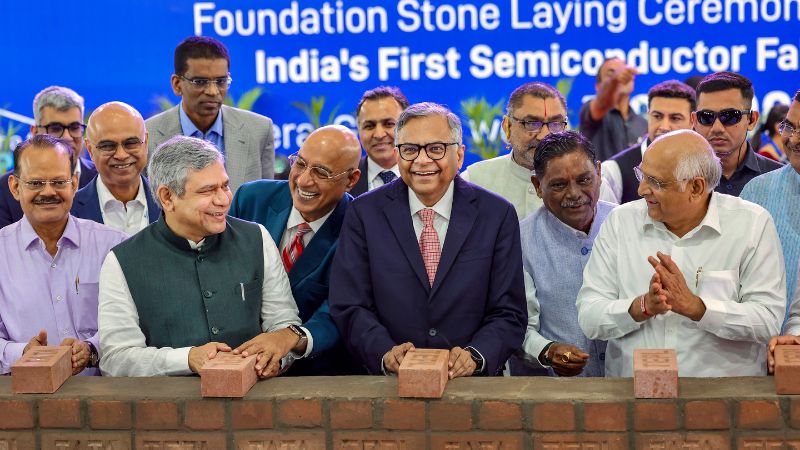Tata Electronics and Powerchip Semiconductor Manufacturing Corporation (PSMC) has launched a semiconductor fabrication plant in Dholera, Gujarat. This is India’s first major step to self-sufficiency in the field of advanced electronics. Tata Electronics and PSMC aim to build a state-of-the-art semiconductor plant in India. With a global reliance on imported chips, India is expected to commence production by 2025 and the number of chips manufactured in the region alone strengthens the nation’s role in the supply chain.

Tata and PSMC have been in partnership for this pioneering venture to develop the first major semiconductor complexity in India widely because Powerchip’s role as a leading Taiwan semiconductor company is to provide technological support in this transition making them a top layer in the foundry stage of manufacturing. This project is set to cost $11 billion and through collaboration, Tata Electronics is determined to meet advanced production standards and chip cassette in this case being 50,000 wafers every month.
Dholera Industrial Revolution
Contents
The plant at Dholera will develop, integrate, and automate best practices in the use of a combination of AI, machine learning, and data to manufacture products in an efficient manner. The facility’s output list will prioritize, but will not be limited to, power management ICs, display drivers, microcontrollers, and high-performance computing chips. The demand across sectors for these components is high due to required applications in AI, automotive, and computing, as well as wireless communications. This diversity ensures that the plant will augment India’s share in high–tech industries relevant to the global markets.
Tata’s Entry Into Semiconductor Space
Many consider Tata’s semiconductor plan to be a game-changer because this will create a huge number of employment opportunities in India. The new plant will itself bring over 20,000 skilled workers directly whereas the supply chain and ancillary industries together might add over 100,000 more jobs to the market. This is in line with India’s policy of “make in India” which considers India as a future hub for manufacturing. Many investors such as Tata are not only looking to manufacture semiconductors, they wish to create an adept environment for advanced technologies that will create a wave of cambios.
India’s Semiconductor Hub In Dholera
Tata’s semiconductor venture comes at a time when demand for electronic components across India’s population is steadily on the rise alongside governmental schemes aimed at boosting self sufficiency. The reality is, as both the digital world as well as smart devices take center stage, the need for semiconductors is rising and India has become one of the largest markets for these components. The ability of the Dholera fab to manufacture critical chips will augment India’s chip technology sovereignty and lessen the country’s chip imports from China and the United States.
India And Taiwan Partnership
This partnership between Tata and PSMC also reflects a strengthening India-Taiwan relationship in high-tech sectors. We all know Taiwan to be the world leader in semiconductor technology, hence, this partnership does not only bring cutting-edge manufacturing practices to India, but it also allows for Indo-Taiwan collaborations in multiple other tech futures. The partnership between Tata and PSMC, might be the beginning of many such alliances, that would dream of building a revolutionary career across the semiconductor landscape.
Future Outlook
Given the fact that the Dholera semiconductor fab is expected to start operation in late 2025, the collaboration of Tata and PSMC is gearing India to be a significant player in the semiconductor space. This also has quite some potential to motivate other Indian firms to invest in semiconductor fabrication and slowly establish India as a reliable collaborator in the global tech supply chain. As the demand for semiconductor continues to grow, Tata’s Dholera plant could be the first on the cue of many such plants, strengthening India’s position in the race of global semiconductor markets and developing a future-ready, talented workforce.

